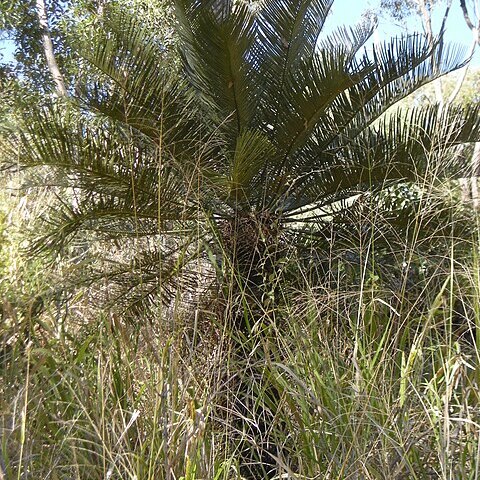A medium sized cycad. The trunk is erect and 50 cm tall by 50 cm across. The young leaves are light green. There are many mature leaves. They are 0.5-1.8 m long and 30-40 cm wide. The leaf stalk is 10-50 cm long and swollen and woolly at the base. The leaflets have a sharp tip. The lower leaflets are reduced to spine like. The average leaflet is 17-28 cm long by 0.4-0.8 cm wide. They are dark green and shiny above and paler underneath. The cones are different. The male cones are 15-30 cm long by 4-6.5 cm wide. There are 1-5 on each plant and they are curved. The female cones are 20-35 cm long by 7-10 cm wide and barrel shaped. There are 1-2 on each plant. The seeds are 2-3 cm long by 1.5-2 cm wide. They are orange to red.


